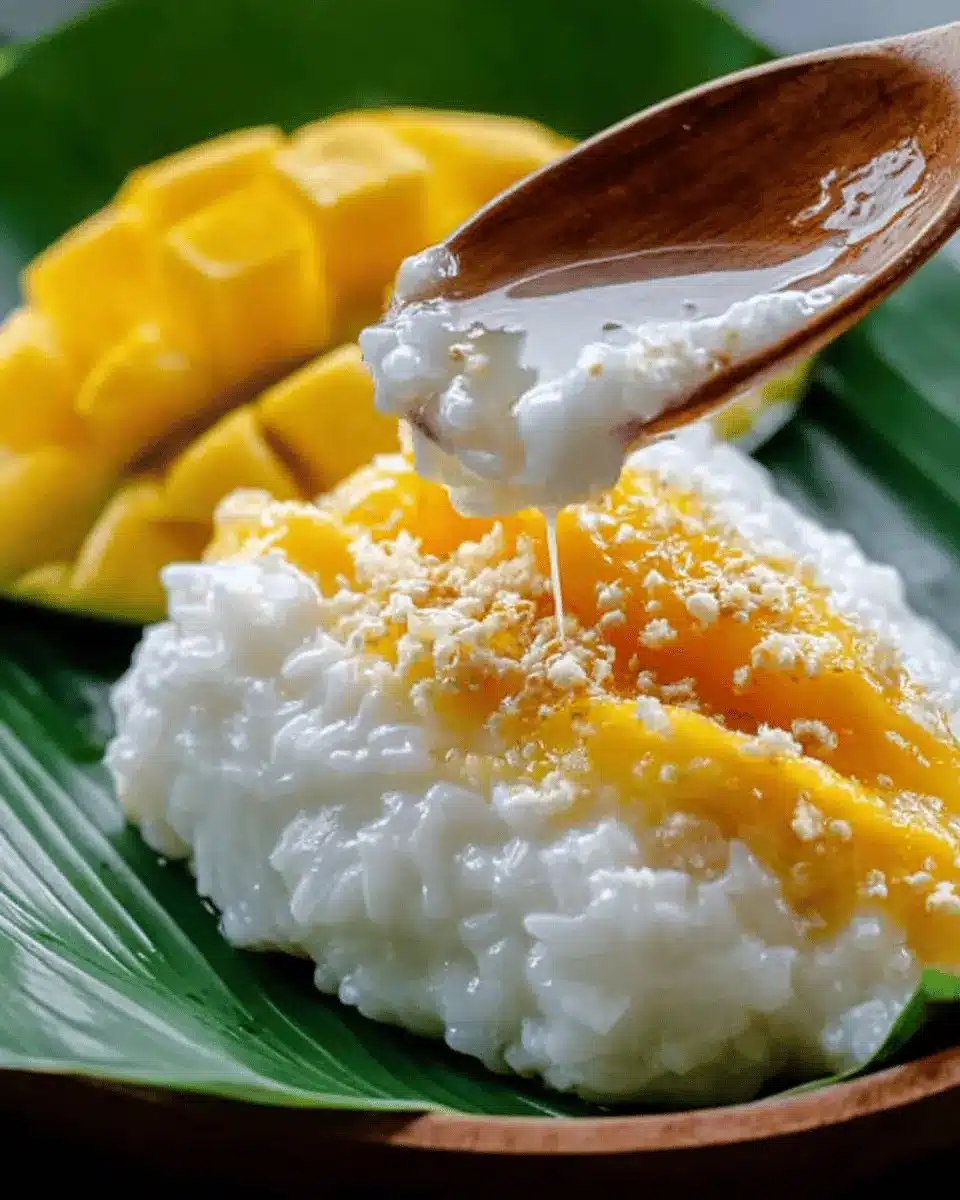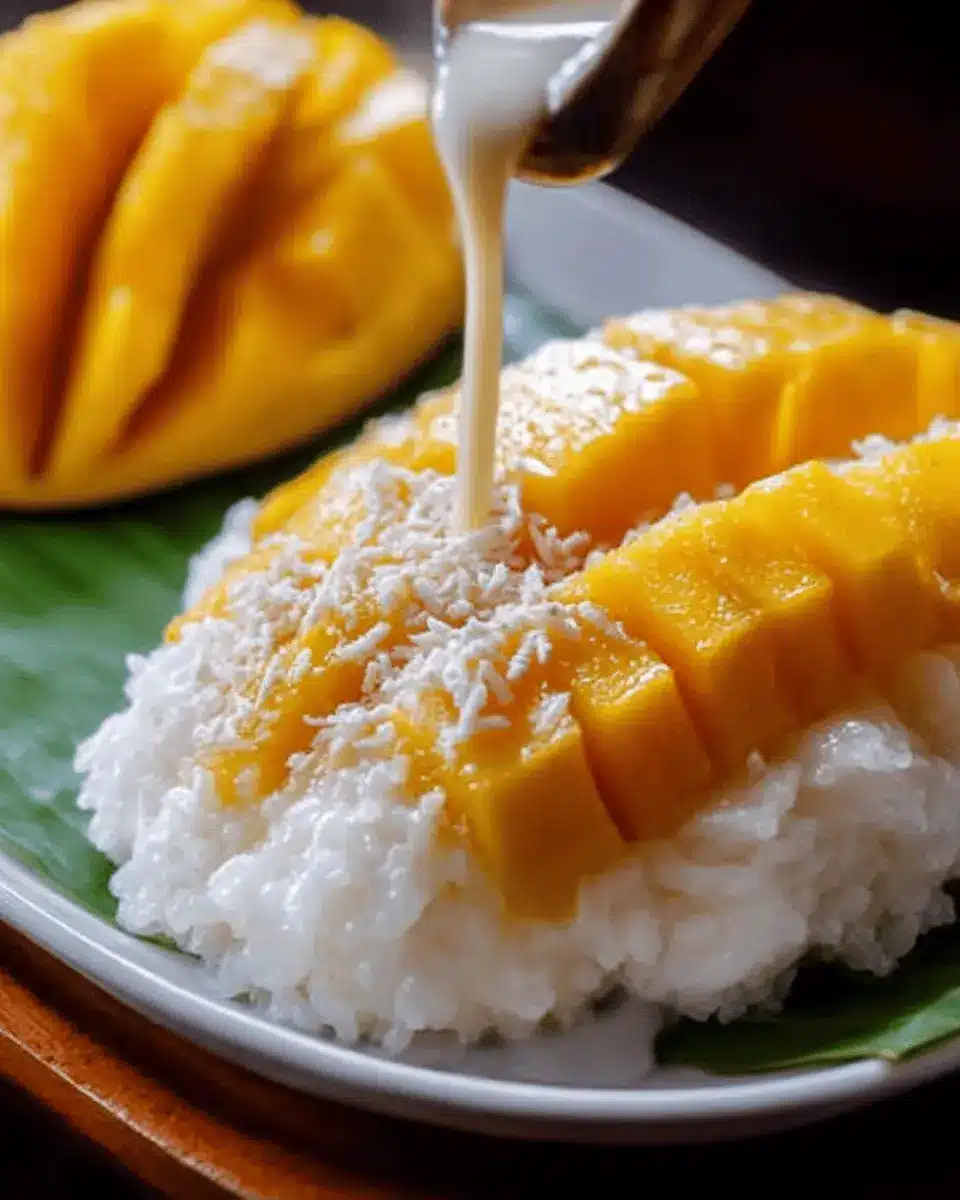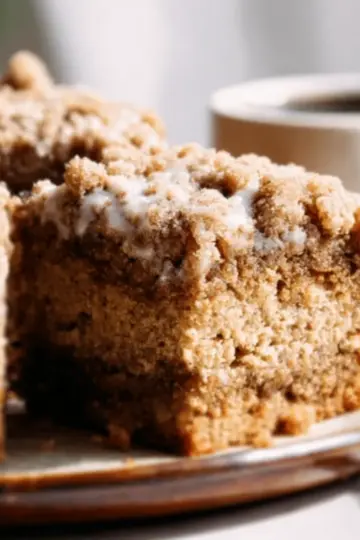Introduction to Thai Mango Sticky Rice
When it comes to dessert, few treats can rival the delight of Thai mango sticky rice. This traditional dish not only bursts with flavor, but it’s also a nostalgic experience for many, especially for those who have traveled to Thailand. There’s something magical about the combination of creamy coconut milk, sweet ripe mangoes, and chewy glutinous rice, making it the perfect indulgence to satisfy your sweet tooth.
Why Mango Sticky Rice is the Perfect Dessert for Young Professionals
As a young professional, you often juggle a busy schedule filled with work commitments and social obligations. Mango sticky rice complements your lifestyle beautifully for several reasons:
-
Quick and Simple Preparation: This dessert is easy to whip up after a long day. With a little bit of planning, especially soaking the rice overnight, you can prepare it in under 30 minutes, making it a viable option for weeknight treats.
-
Impressive Presentation: Serve this delightful dish to impress friends or colleagues during a gathering. The vibrant colors from the fresh mango and the creamy texture create an inviting plate that’s perfect for sharing.
-
Balance of Flavors: The mix of sweet, salty, and creamy flavors in mango sticky rice can provide a delicious escape from everyday stress.
For a more in-depth look at making this beloved dessert, check out this complete recipe for Thai mango sticky rice. Making it will transport you back to those flavorful streets of Bangkok, whether you whip it up solo or share it with others.

Ingredients for Thai Mango Sticky Rice
Creating an authentic Thai Mango Sticky Rice dessert at home is both delightful and satisfying! Let’s dive into the key components you'll need to whip up this treat.
Coconut Rice Ingredients
For the creamy coconut rice, gather:
- 1 cup of dry glutinous rice (soaked overnight)
- 1 cup of full-fat coconut milk
- 3-4 tablespoons of granulated sugar (adjust based on your sweetness preference)
- ½ teaspoon of sea salt
These ingredients work together to give the rice its rich and luscious texture that melts in your mouth.
Coconut Sauce Ingredients
To drizzle over your mango sticky rice, prepare a simple coconut sauce with:
- ½ cup of full-fat coconut milk
- 2-3 tablespoons of granulated sugar (modify according to your taste)
This luscious sauce enhances the flavors, making each bite heavenly!
Mango Preparation
Next, let’s talk about the star of this dessert: ripe mangoes! You will need:
- 2 large, perfectly ripe mangoes
- Optional: toasted coconut for a crunchy topping
Slice the mangoes into halves and then into strips to create wonderful mango “cheeks” that pair beautifully with the sticky rice.
This combination of ingredients is what transports me back to those sunny days in Bangkok, sharing an unforgettable dessert experience. Happy cooking!
Preparing Thai Mango Sticky Rice
Creating mango sticky rice is a delightful journey that combines the creaminess of coconut with the sweetness of perfectly ripe mangoes. This step-by-step guide will walk you through the preparation process, ensuring your dessert is a hit!
Soak the rice
Start by soaking 1 cup of dry glutinous rice in a bowl of water for at least 8-24 hours. This step is vital because soaking allows the rice to absorb water, leading to that wonderfully chewy texture we all love. Be sure to wash the rice thoroughly—about 3-4 times—until the water is nearly clear. This helps remove excess starch for a cleaner finish.
Steam the rice to perfection
After soaking, drain the rice and place it in a bamboo steamer lined with parchment paper. Steam the rice for 20-25 minutes or until it becomes soft, slightly translucent, and still chewy. If you didn’t soak the rice long enough, you’ll need to adjust your steaming time accordingly. Once done, set it aside while you prepare the coconut mixture.
Create the coconut mixture
In a medium saucepan, heat 1 cup of full-fat coconut milk over medium-high heat. Stir in 3-4 tablespoons of granulated sugar and ½ teaspoon of sea salt. Keep stirring until the mixture comes to a gentle boil. Lower the heat and allow it to simmer until the sugar completely dissolves. This delicious blend is what gives your mango sticky rice its unique creaminess. If you want to add a twist, consider incorporating ube halaya or a few drops of ube extract for an extra layer of flavor.
Assemble the dessert
Peel and slice 2 large ripe mangoes, making sure to cut them into nice, even strips. Now it’s time for the fun part! Portion out your sticky rice in serving bowls, then elegantly arrange the mango slices alongside. The contrast of colors will make your dish visually appealing, and trust me—it will taste as good as it looks!
Drizzle the coconut sauce
To finish, prepare your coconut sauce by heating ½ cup of coconut milk with 2-3 tablespoons of sugar until it thickens slightly. This rich sauce deserves a gloriously generous drizzle over your assembled dessert. If you’re feeling particularly indulgent, top it off with some toasted coconut flakes for that extra crunch.
While preparing your mango sticky rice, consider playing around with presentation. Maybe even add a sprig of mint as a garnish! This dessert is best enjoyed fresh, but if you happen to have leftovers, refrigerate them and consume within a couple of days for optimal flavor.
Now, dig in and enjoy this magical taste of Thailand right in your kitchen!

Variations on Thai Mango Sticky Rice
Mango Sticky Rice with Ube
Elevate your traditional mango sticky rice by adding ube, the vibrant purple yam popular in Filipino desserts. Simply incorporate ube halaya into the coconut sauce for a unique twist that adds both flavor and eye-catching color. This delightful fusion not only enhances the aesthetic appeal but also brings in a creamy, nutty texture that perfectly complements the sweetness of the mango. Trust me, your taste buds will thank you for this exciting variation! For more on ube, check out this guide.
Vegan Options for Mango Sticky Rice
If you're looking for a vegan-friendly version of mango sticky rice, you’re in luck! The main ingredients—glutinous rice, coconut milk, and mangoes—are already plant-based. Just be sure to use vegan sugar, as some granulated sugars are processed with bone char. Plus, delicious substitutes like agave syrup can work wonders. For a hint of extra flavor, consider adding a splash of vanilla. This way, you can enjoy a guilt-free, creamy dessert that doesn’t compromise on taste!
Cooking tips and notes for Thai Mango Sticky Rice
Importance of rice soaking
Soaking your glutinous rice overnight is crucial for achieving that perfect chewy texture in your mango sticky rice. This step allows the rice to absorb water, ensuring it cooks evenly and completely. You wouldn't want a grainy or hard bite, right? So, plan ahead! If you’re short on time, soaking for at least 4 hours can be a good alternative, but just remember that longer is better for that authentic taste and texture.
Adjusting sweetness level
When preparing the coconut sauce for your mango sticky rice, sweetness is entirely a matter of preference. Start with the suggested amount of sugar, and then taste! If you like it sweeter, feel free to add more, but be sure to stir well until it dissolves fully. Consider using natural sugar alternatives like maple syrup or honey for a unique twist. This is your dessert—make it your own! For more tips, check out detailed resources on adjusting sweetness in desserts from Serious Eats.

Serving suggestions for Thai Mango Sticky Rice
Garnishes to elevate the experience
To truly enhance your Thai Mango Sticky Rice, consider adding a sprinkling of toasted sesame seeds or toasted coconut flakes on top. These little finishes not only provide a delightful crunch but also complement the creaminess of the coconut milk. For a burst of flavor, drizzle a touch of sweetened coconut sauce over the dish before serving. If you're feeling adventurous, a handful of fresh mint leaves can add a refreshing touch that beautifully contrasts the sweetness of the mango.
Best pairings with mango sticky rice
When thinking about what to pair with your mango sticky rice, the possibilities are endless! A side of fresh tropical fruit, such as pineapple or dragon fruit, can create a wonderfully vibrant plate. For a more gourmet approach, try serving it with coconut ice cream—the cold creaminess complements the warm rice perfectly. If you're in the mood for something savory, a side of spicy Thai papaya salad can provide a zesty contrast to the dish. Enjoy your treats while cozying up with a refreshing Thai iced tea or a sparkling coconut water for a perfect ending to your meal.
Time details for Thai Mango Sticky Rice
Preparation time
The delicious journey begins with a 10-minute prep session. Simply soak your glutinous rice overnight, and you’re on your way to whipping up this delightful treat.
Cooking time
Set aside about 10 minutes for cooking after your rice has soaked. This includes steaming the rice and preparing the luscious coconut milk mixture.
Total time
With just a full day dedicated to soaking and 20 minutes of active cooking, you’ll enjoy this exotic dessert after approximately 1 day and 20 minutes of anticipation.
For more insights on this beautiful dessert, check out sources like Serious Eats and Thai Table to explore traditional preparations and cultural significance.
Nutritional Information for Thai Mango Sticky Rice
Calories
Indulging in mango sticky rice is a treat to savor, and a serving contains approximately 531 calories. This filling dessert is perfect as an occasional reward for your taste buds!
Protein
With only 4 grams of protein per serving, it's not a significant source, but those luscious mangoes and creamy coconut milk provide a hint of nutrients and energy to keep you satisfied after each delightful bite.
Sodium
For those watching their intake, this dessert is relatively low in sodium, with about 6 milligrams per serving. This makes it a great choice for a sweet indulgence that won't tip the scales on your dietary goals.
Enjoy this classic Thai dessert knowing its nutrition is as delightful as its taste! Whether it's for a special occasion or a weekday treat, mango sticky rice brings a little piece of Thailand to your home. If you're curious about more nutritional insights, check out Healthline's guide to tropical fruits for a deeper dive into the benefits of mangoes and coconut.
FAQs about Thai Mango Sticky Rice
Can I replace mangoes with other fruits?
Absolutely! While mangoes are the classic choice for this delightful dessert, you can experiment with other fruits like pineapple, banana, or even jackfruit. Just make sure the fruit you choose is ripe and sweet to complement the rich coconut flavor.
How to store leftover mango sticky rice?
If you have any mango sticky rice left over, store it in an airtight container in the refrigerator. It’s best consumed within a day or two, as the coconut milk can spoil quickly. When you're ready to enjoy it again, reheat in the microwave with a sprinkle of water to get that delicious, soft texture back.
Is it necessary to use glutinous rice?
Yes, using glutinous rice (or sticky rice) is essential for achieving the unique chewy texture that mango sticky rice is known for. Regular rice won't provide the same delightful mouthfeel, so it’s worth sourcing if you want to recreate that authentic dish. You can find it at Asian grocery stores or online.
For more tips on making the perfect dessert, check out resources like Serious Eats for additional insights into tropical fruits!
Conclusion on Thai Mango Sticky Rice
In summary, Thai mango sticky rice is a delightful treat that's not only easy to make at home but also brings a slice of Thailand straight to your kitchen. Perfect for sharing with friends or enjoying solo, this dessert is sure to elevate any meal. Try it today and savor a taste of the extraordinary!

Mango Sticky Rice
Equipment
- bamboo steamer
- large pan
- sauce pourer
Ingredients
Coconut Rice
- 1 cup dry glutinous rice soaked overnight
- 1 cup full fat coconut milk
- 3-4 tablespoon granulated sugar see notes
- ½ teaspoon sea salt
Ube (Optional)
- 3-4 tablespoon ube halaya or ube spread see homemade recipe
- 2-3 drops ube extract optional
Coconut Sauce
- ½ cup full fat coconut milk
- 2-3 tablespoon granulated sugar adjust to desired sweetness
Corn Starch Slurry
- 1 teaspoon corn starch
- 2 teaspoon room temperature water
Mangoes
- 2 large ripe mangoes
- toasted coconut for topping (optional)
Instructions
Coconut Rice
- Wash the rice 3-4 times to remove the starch or until the water is almost clear. Leave to soak overnight for at least 8-24 hours.
- Afterwards, drain the water from the rice. Place the rice on a bamboo steamer lined with parchment paper.
- Steam for 20-25 minutes or until the rice is cooked, slightly translucent, and still very chewy.
- In a large pan, heat the coconut milk over medium high heat. Add in the sugar and salt. Leave the coconut milk to simmer over medium high heat until it boils.
- Once it boils, lower heat to medium and continue stirring until the sugar has dissolved.
- Mix in the ube spread and extract (if using) and mix well with the coconut milk. Some chunks of ube are totally fine.
- Add in the steamed rice and cook down until it has absorbed the coconut milk and has thickened, around 4 minutes.
- Turn off the heat and leave to cool for 5 minutes.
Coconut Sauce
- In the same pan over medium high heat, add the coconut milk and sugar. Stir and cook over medium heat until it boils.
- Once it boils, lower the heat to medium. Dilute the cornstarch with the water.
- While stirring the coconut milk, pour in the cornstarch mixture. Turn off heat and keep stirring until it thickens.
- Transfer to a sauce pourer or small container until ready to use.
Assembling them
- Peel the mangoes and slice, creating 4 mango halves. Then slice each cheek into 1⁄4-inch thick strips.
- Portion the rice and mangoes into 4, then top with toasted sesame seeds. Drizzle on some of the coconut sauce. Best enjoyed when freshly made!





Leave a Reply